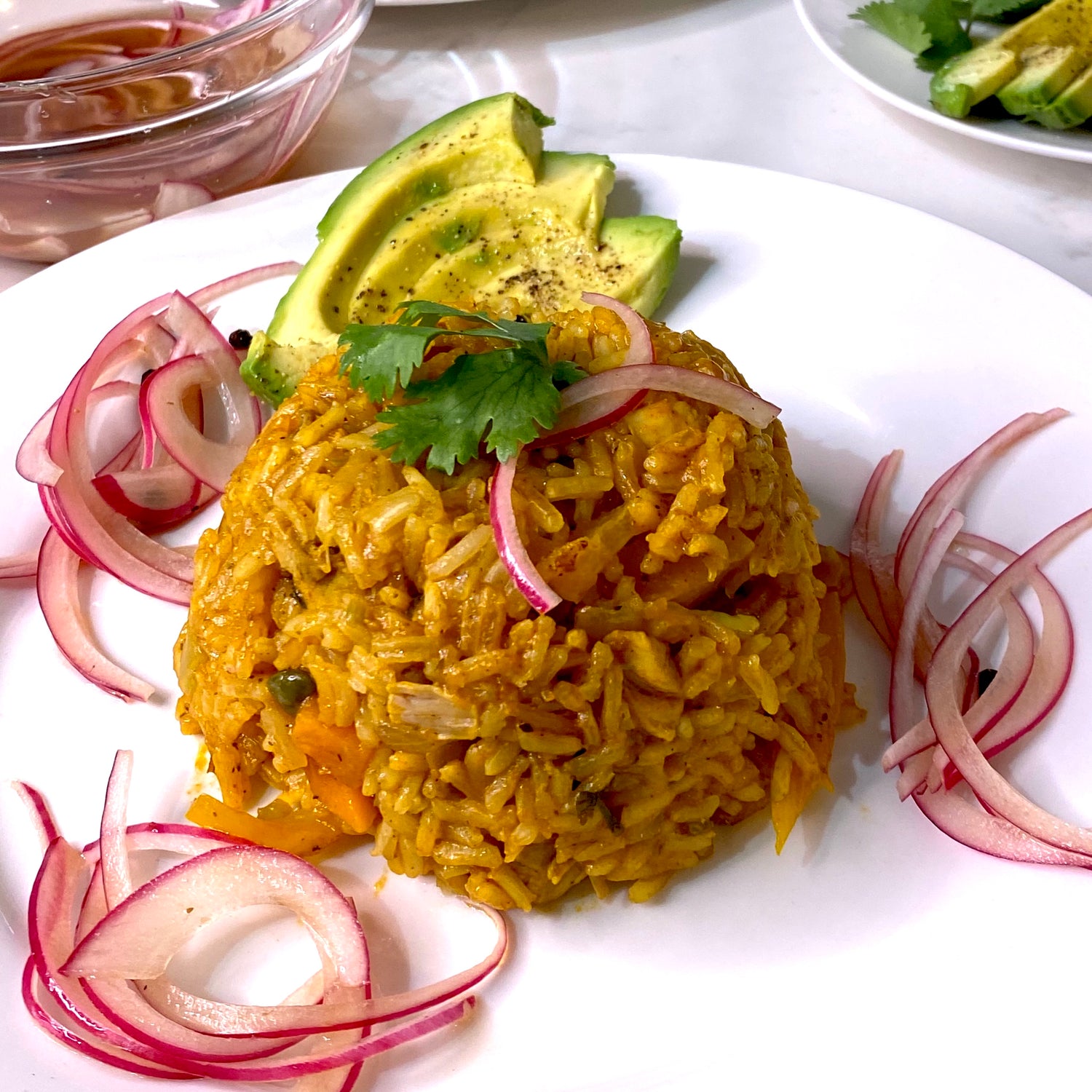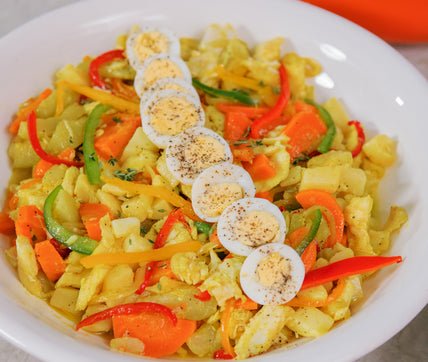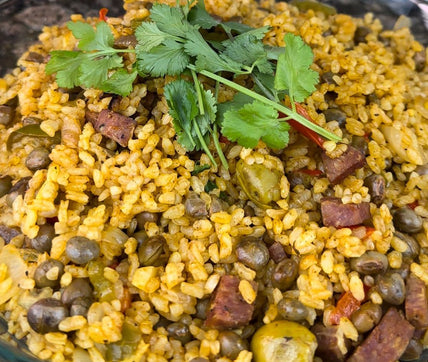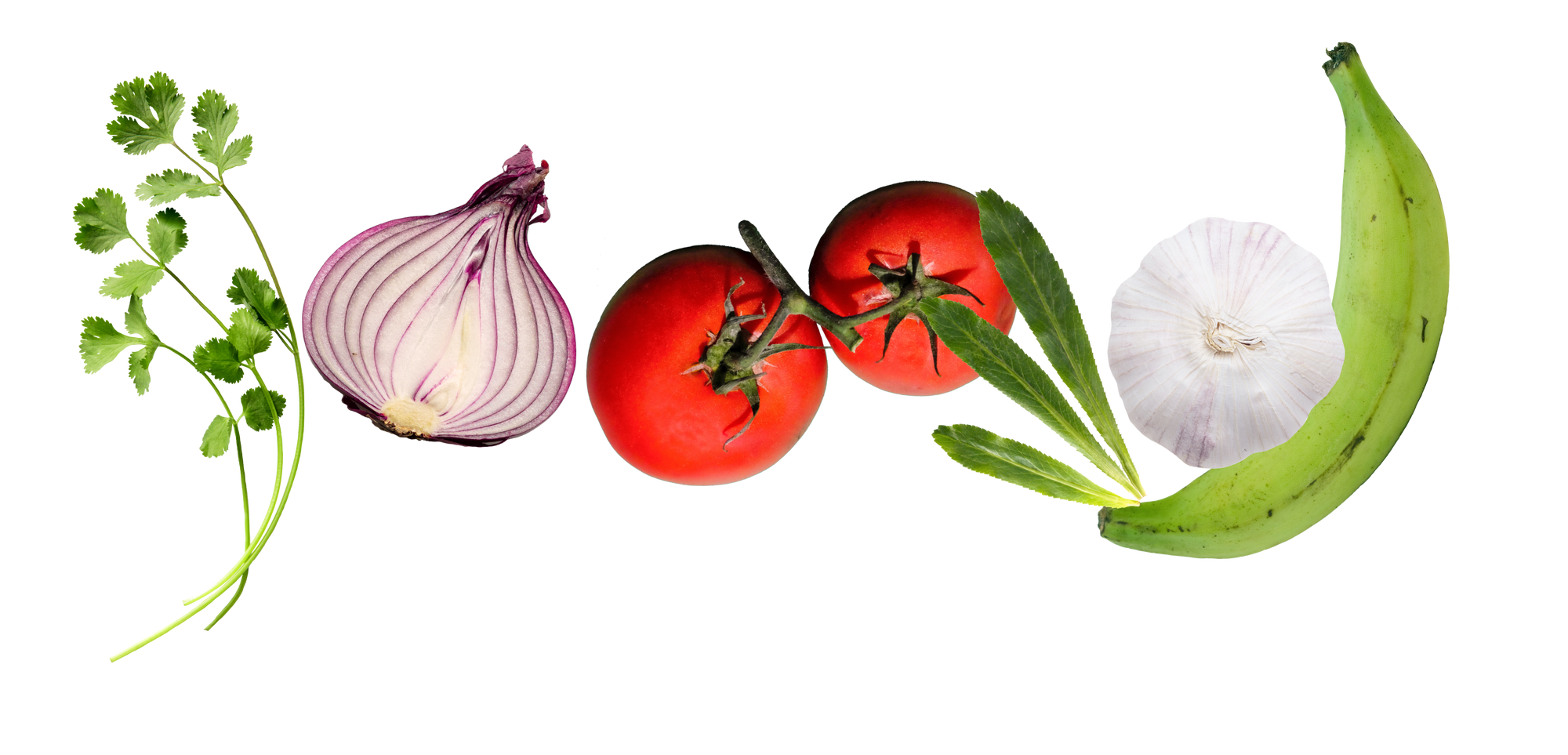
Heritage Through Rice: Locrio de Pollo
Chef Yadi celebrates her Dominican heritage & the importance of rice in our culture through locrio.
by Yadira Garcia | @happyhealthylatina
This Latin Heritage Month at Loisa, we’re thinking about all the ways we celebrate our culture and connect with our heritage through our wonderful dishes and ingredients. As I think about the ancestral foods that have nourished our people for generations, one of the first things that comes to mind is rice. Like many countries, my island– the Dominican Republic– has a deep history and relationship with rice. You can trace the colonization of the Caribbean through the history of rice. Rice and beans are a pairing that originated in Africa and traveled to the Americas through the Trans-Atlantic slave trade. Now, it has become part of our “Bandera” (the flag), a dish that represents our island and is also widely consumed by many Latin countries and cultures.
While I am a fanatic gospel spreader of Caribbean rice dishes like moro and arroz con habichuelas, as a trained Chef, culinary educator, and avid traveler, I often see the exalting of rice in dishes is reserved for risottos and paellas. So today, here and now, I propose that locrio takes its rightful place in the rice hall of history and fame, with dishes of the world like risottos, paellas, briyani, and jollof.

By definition, locrio is a rice dish from the Dominican Republic. Similar to pilaf and paella, it consists of seasoned rice with some kind of meat, such as chicken, Dominican salami, or pork. It is historically a poor man’s dish, born from what was accessible on the island. It is a humble dish that encapsulates the history and deep pride of the Dominican Republic– pride that is often displayed and expressed through our foods.
Food history consistently shows us how all cultures are more alike and intertwined than they are different, signaling how we have persevered and survived along our unique pathways. Locrio is a talented and ingenious display that proves it's not about what we have access to, but rather how we use what we have access to in order to create elevated, delectable masterpieces. Under the hood of locrio, you can find a tantalizing combination of sofrito, vegetables like garlic, onion, and celery, fresh herbs and spices, and tenderized and marinated protein. All of these ingredients are so wonderfully balanced and flavorful that it creates an unforgettable experience.
Like sofrito, locrio recipes can vary slightly by region of the island and the ingredients by family. There is no wrong way to make it, and no matter what your recipe is, the finished product is always moist, tender, and succulent. I leave you here with a locrio de pollo based on my family recipe with some of my own culinary interpretations. I hope you feel inspired to make it and celebrate this dish as an indelible part of our cultura, historia, and familias.
A Buen Tiempo,
Chef Yadi








